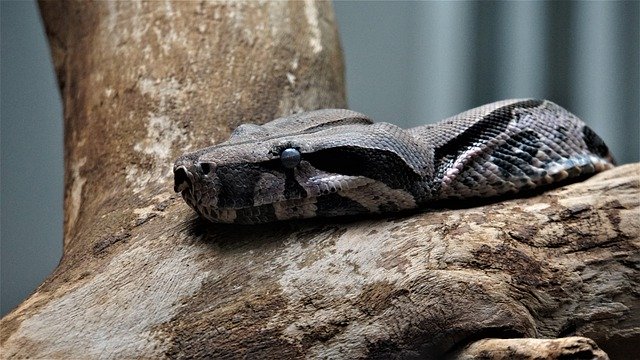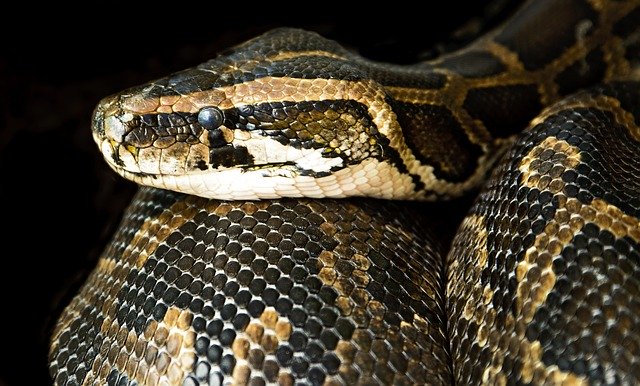Boa Constrictor
Red tailed boa is among the most common and well known species of snakes kept as pets. The common name Red tailed boa refers to one of many types of boas found throughout Central and South America. These snakes can grow to a large but manageable size and are recommended only for keepers willing to provide adequate space for adults. The friendly demeanor and attractive coloration have made the Red tailed boa one of the most sought after snakes in the hobby. These tropical snakes are commonly bred in captivity and we recommend purchasing captive bred animals only.
Common Name: Red Tailed Boa
Scientific Name: Boa constrictor
Distribution: Central and South America
Size: 3-10’
Life Span: 15-25 years

HABITAT
Neonates to juveniles (under 3’) can be housed in a 20-40 gallon terrarium. 40-60 gallon terrariums are an excellent choice for young boas. Adult Boas will need an enclosure that is no shorter than half the length of the snake. There are several cages that we carry to house adult boas. Minimal cage size for adults should be 4’ x 2’x 1’. A secure, lockable sliding-screen lid is required.
HEATING
Daytime Terrarium Temperature 80-85°F
Basking Temperature 85-92°F
Nighttime Terrarium Temperature 72-78°F
Create a thermal gradient in your snake enclosure by placing a heat lamp and an Under Tank Heater on one side of the terrarium. By placing all the heating elements on one side of the cage, you will naturally provide the proper thermal gradient. A thermometer will help you keep an eye on terrarium temperatures. An Under Tank Heater is essential to provide belly heat to your snake while it digests a meal.
LIGHTING
Snakes typically do not require UVB to meet their vitamin D requirements. However, many snakes receive UVB and sunlight in their natural habitat and there is new evidence that they benefit from UVB lighting in captivity. Fluorescent lamps can be used to illuminate your terrarium and create a natural day/night photoperiod.
SUBSTRATES
Boa Constrictors will do best on Aspen Snake Bedding, cypress mulch, Eco Earth or ReptiBark. We recommend a substrate layer of 2.-3″ in depth. Provide moistened moss in a cave to create a humidity chamber. This chamber will help your snake shed its skin as it grows. Reptile carpet can be used as a safe, environmentally  friendly and easy-to clean substrate.
friendly and easy-to clean substrate.

NUTRITION
Boa Constrictors can be fed exclusively mice and rats throughout their lives we recommend frozen rodents only. Rodents provide snakes with the needed calcium and vitamins. Have fresh water available at all times. Zoo Med’s Corner Bowls are an excellent choice of water bowls for all snakes. When choosing the proper sized food item for your snake select a mouse/rat that is the same size, or slightly bigger than the girth of your snake body. Young will eat 1 hopper mouse per week. Juveniles will eat 2 adult mice or 1 rat pup per week. Adults will eat 1 appropriately sized rat per week. Large adults may need larger food items such as rabbits, Guinea pigs, or similar sized food.

